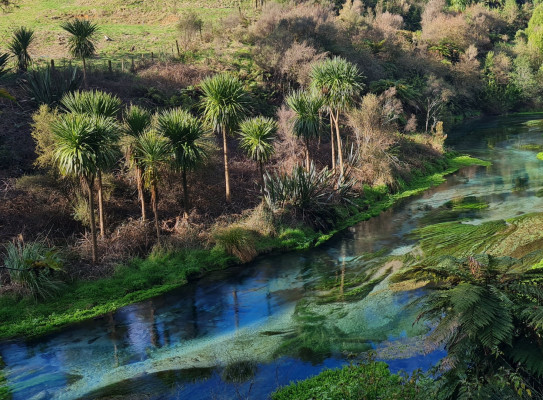New findings on nitrates in rural drinking water

Many rural communities rely on private water supplies for their drinking water, but that means their water isn’t tested for the presence of contaminants, including nitrates. Now, new research into rural groundwater is giving people valuable information about the level of nitrate contamination in different parts of the country.
New Zealand’s largest ever drinking water investigation has found Waikato, Canterbury and Southland to be regions of ‘significant’ concern for nitrate contamination of groundwater supplies. Seven other regions were identified to be of ‘emerging’ concern.
While public drinking water (‘town supply’) must meet Government standards and regulations, there are no requirements to test drinking water from private groundwater bores and springs that supply 25 or fewer people. Most of these are found in rural areas and are vulnerable to nitrate contamination.
A new study led by Earth Sciences NZ (formerly GNS Science) analysed data from more than 2,400 rural drinking water samples tested nationally between 2022 and 2024. The data was collected from several citizen-science community testing programmes including Earth Sciences NZ’s Nitrate Watch project, and programmes run by Greenpeace Aotearoa, University of Canterbury, and Te Herenga Waka – Victoria University of Wellington.
The programmes sourced samples through mail-in and town hall testing events, becoming an important vehicle to raise awareness of, and screen for, the presence of nitrate.
Lead author of the study Dr Karyne Rogers said people from across the country helped to build a national picture of nitrate contamination hot spots and in return received vital information about the nitrate levels of their own drinking water supply.

Related lab Tritium and Water Dating Laboratory
This was a grassroots effort, and the first sampling campaign of this scale for Aotearoa New Zealand
The researchers found 5.1% of samples exceeded the highest acceptable level of nitrate allowed in publicly registered drinking water (Maximum Acceptable Value -MAV). A further 30.9% had more than half the MAV.
Canterbury, Waikato and Southland had the most samples that exceeded the MAV. Seven other regions had ‘emerging’ nitrate issues.
“The results signal a widespread and concerning threat to freshwater quality across multiple regions,” Rogers says.
Conny Tschritter, Earth Sciences NZ groundwater scientist and co-author of the study, says it is important for rural bore owners to make informed decisions about monitoring their bores, especially in regions not widely known to have challenges with nitrate in groundwater.
“Once we see a drinking water source approaching half the MAV, it’s a clear warning that there is nitrate contamination in the groundwater catchment, whether that’s due to increased land-use intensification or soils that are more vulnerable to excess nitrate leaching.”
-
Preventing nitrate from entering your drinking water
The safest groundwater comes from confined aquifers under areas that have little access by people or animals and where there is no intensive agriculture or industry. This is not always possible so it’s very important to take all necessary steps to prevent contamination.
You should:
- construct your bore in a safe location
- dig a deeper bore to access a confined aquifer (if possible)
- seal and protect your bore from contamination
- regularly inspect your bore for damage
- keep nitrate sources (and other chemical hazards such as pesticides) away from your bore
Find more information about protecting your bore from contamination in HealthEd's pamphlet Secure Groundwater Bores and Wells for Safe Household Water(external link).